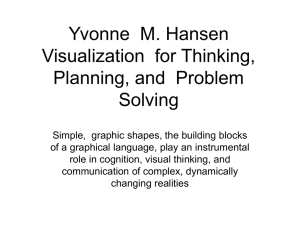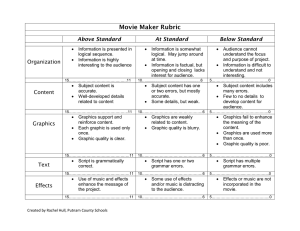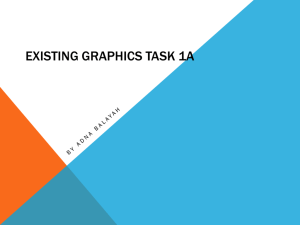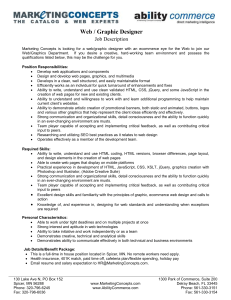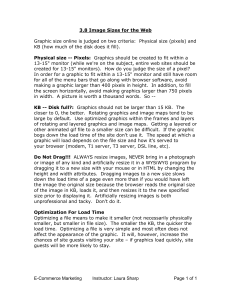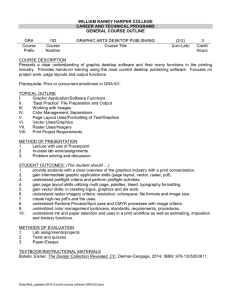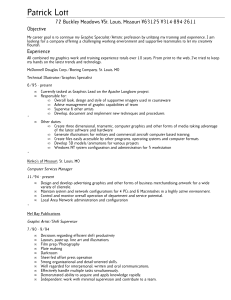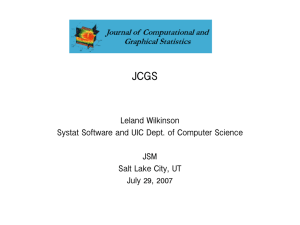Yvonne M. Hansen – Visualization for Thinking, Planning, and Problem... Simple, graphic shapes, the building blocks of a graphical language,...
advertisement
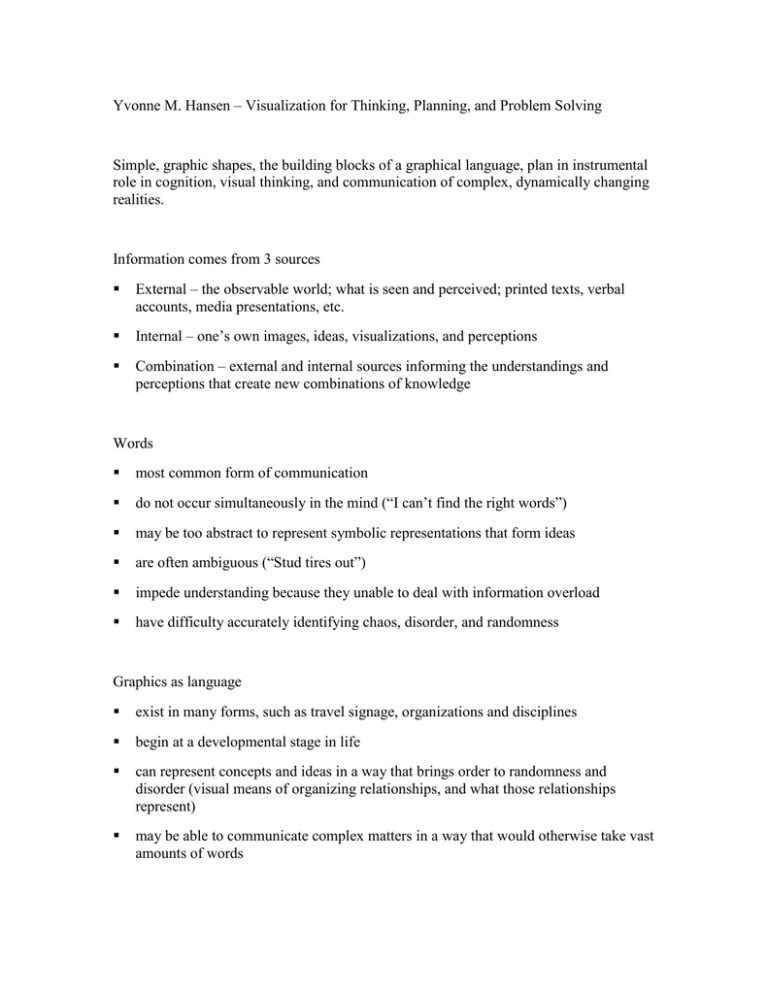
Yvonne M. Hansen – Visualization for Thinking, Planning, and Problem Solving Simple, graphic shapes, the building blocks of a graphical language, plan in instrumental role in cognition, visual thinking, and communication of complex, dynamically changing realities. Information comes from 3 sources External – the observable world; what is seen and perceived; printed texts, verbal accounts, media presentations, etc. Internal – one’s own images, ideas, visualizations, and perceptions Combination – external and internal sources informing the understandings and perceptions that create new combinations of knowledge Words most common form of communication do not occur simultaneously in the mind (“I can’t find the right words”) may be too abstract to represent symbolic representations that form ideas are often ambiguous (“Stud tires out”) impede understanding because they unable to deal with information overload have difficulty accurately identifying chaos, disorder, and randomness Graphics as language exist in many forms, such as travel signage, organizations and disciplines begin at a developmental stage in life can represent concepts and ideas in a way that brings order to randomness and disorder (visual means of organizing relationships, and what those relationships represent) may be able to communicate complex matters in a way that would otherwise take vast amounts of words may be able to “free” the mind otherwise constrained to the narrowness of words, labels, and classification systems using graphics along with words allows the user to see relationships and structure among data that are obscured in a text-only situation (identify patterns and irregularities more easily) The Graphic Tools Circle, Square, Triangle, Line, Point, Fuzzy, and Combination Based on many Gestalt principles such as similarity, enclosure, symmetry, etc. normally used in combination to express and idea or concept, reveal relationships, and capture the formation of new thoughts multiple combinations can represent entire systems, and have proved to be effective in collaborative work situations Ways to represent objects range from abstract to concrete. Most abstract: Verbal Symbols definitions, descriptions, labels Less abstract (More concrete): Graphic Symbols image related graphics, concept related graphics, arbitrary graphics Most concrete: Pictorial Symbols 3D models, sculptures, reliefs, photographs, illustrations, drawings Animation Useful for showing process Useful for emphasizing aspects of a graphical representation (directing the audience’s attention) Comprehension by re-creation complex movements complex environments Provides the opportunity for multiple P.O.V. Simulations and Interactive Experiences real-world activity without costs of real-world consequences practice to acquire knowledge and skills engages the audience, attunes them to the information being presented allows natural clustering of information, improving comprehension of ideas
